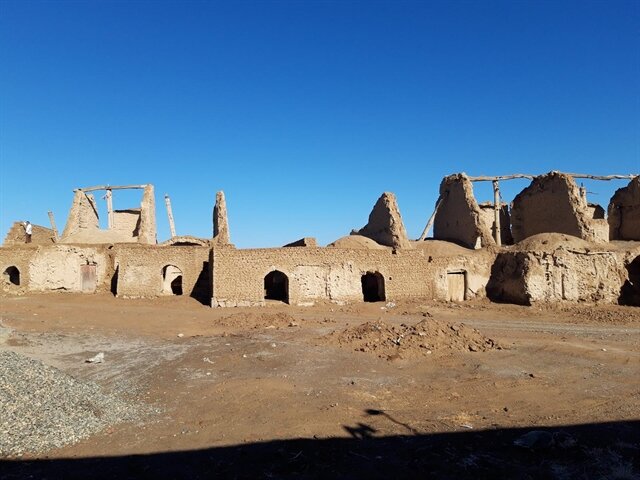Centuries-old windmills to come to life again

TEHRAN – Restoration work has been commenced on six mudbrick windmills that are still standing tall in Tabas-e Masina, South Khorasan province, eastern Iran.
Such vertical-axis windmills, locally known as Asbads, are dotted across the provinces of Sistan-Baluchestan, South Khorasan and Khorasan Razavi, fueled with strong northern winds that are usually blowing in the region.
The six windmills are mounted on mudbrick platforms in Kheirabad neighborhood of Tabas-e Masina and they date back to Qajar era (1789–1925), a local official said, CHTN reported on Sunday.
Foundations, which provide the structure’s stability from the ground, are being reinforced, walls are covered and strengthened using cob material, and rooftops also being amended during the current phase of the restoration, the official explained.
Iran’s Cultural Heritage, Handicrafts and Tourism Organization announced in November 2017 that Iran has proposed Asbads for possible inclusion in the UNESCO World Heritage list.
“Asbad is a smart technique to grind grains, a technique which goes back to ancient times when the people living in the eastern parts of Iran, in an attempt to adapt themselves with the nature and transform environmental obstacles into opportunities, managed to invent it,” according to UNESCO’s website.
“The earliest-known references to windmills are to a Persian millwright in 644 CE and to windmills in Seistan [Sistan], Iran, in 915 CE,” the Encyclopedia Britannica says.
Currently, they are on the itinerary of avid travelers and researchers to the region, who want to feel such subtle yet simple mechanism in person as several windmills have been restored and brought back to life.
AFM/MG
Leave a Comment